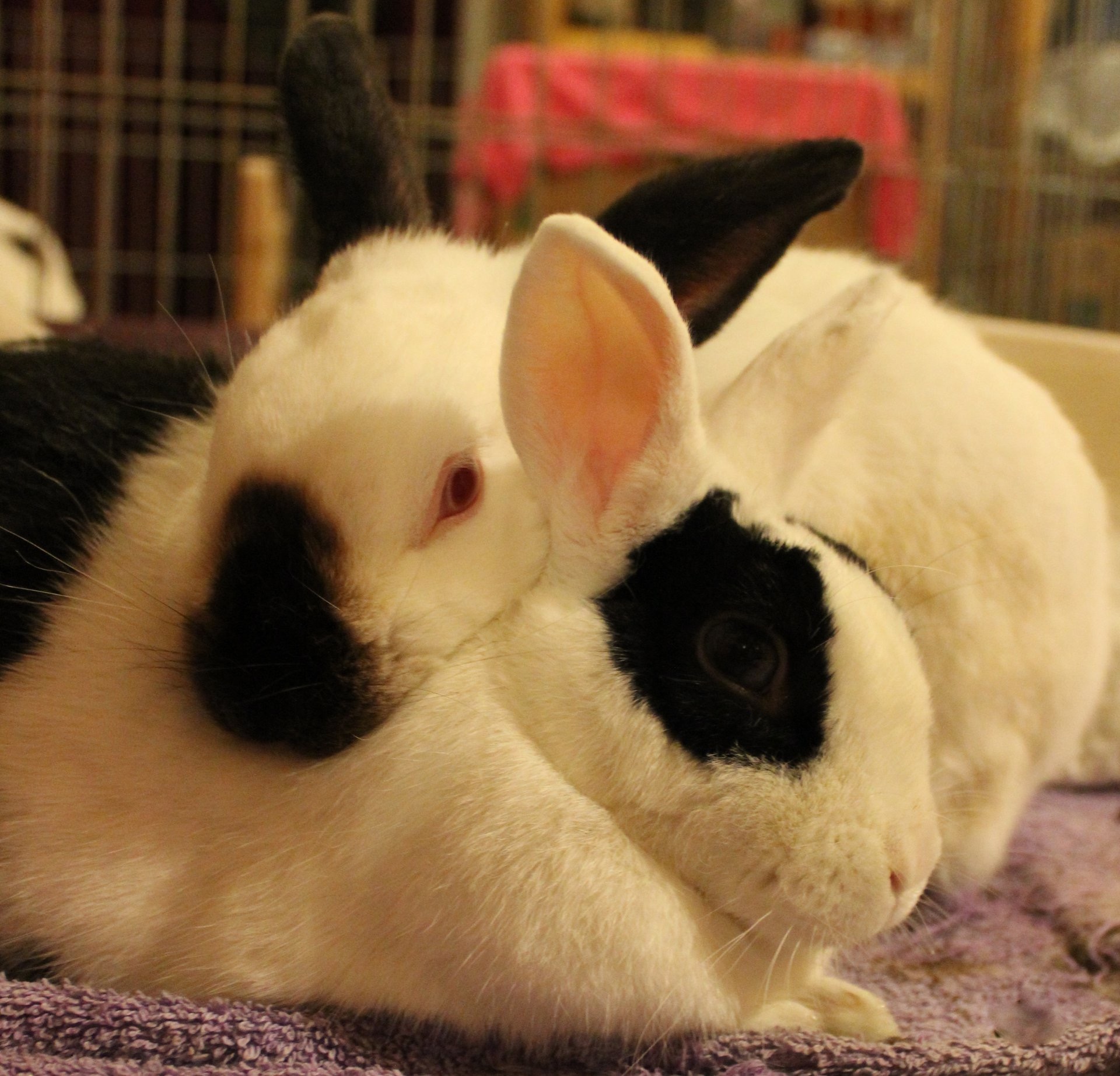Key Takeaways
Rabbit bonding can take anywhere from a few weeks to several months, depending on various factors.
Initial bonding sessions should be short, around 10-15 minutes, and gradually increase in length.
Neutral territory is essential to minimize territorial aggression during bonding.
Positive behaviors like grooming and lying next to each other indicate progress in bonding.
If rabbits start chasing each other aggressively, intervene with distraction techniques and boundaries.
How Long Does It Take for Two Rabbits to Get Used to Each Other
Bonding two rabbits is a delicate process that requires patience and careful observation. The time it takes for two rabbits to get used to each other can vary widely. Some rabbits may bond within a few weeks, while others may take several months.
Most importantly, the bonding process should never be rushed. Rushing can lead to aggressive behavior, which can set the process back significantly. Therefore, it’s essential to follow a structured approach and be prepared for a long-term commitment.
“introduction to bonding rabbits” from www.theeducatedrabbit.com and used with no modifications.
The General Timeline for Rabbit Bonding
Week 1-2: Initial introduction in neutral territory, short sessions.
Week 3-4: Gradually increase the length of bonding sessions.
Month 2-3: Rabbits may start showing signs of bonding, such as grooming and lying next to each other.
Month 3+: Continue monitoring and gradually allow more shared space.
It’s essential to monitor the rabbits closely during each stage. Look for signs of stress or aggression and be prepared to adjust the approach as needed.
Factors Influencing the Bonding Duration
Several factors can influence how long it takes for two rabbits to bond. Understanding these factors can help you manage your expectations and create a more effective bonding strategy.
Firstly, the age and temperament of the rabbits play a significant role. Younger rabbits may bond more quickly than older ones. Similarly, rabbits with more docile temperaments are generally easier to bond.
Secondly, the rabbits’ previous experiences with other rabbits can also impact the bonding process. A rabbit that has had positive interactions with other rabbits in the past may be more open to bonding.
Lastly, the environment and setup can make a big difference. A neutral territory where neither rabbit feels territorial is crucial. This helps minimize initial aggression and allows the rabbits to focus on getting to know each other. For more tips, check out these favorite plants for a rabbit garden.
“The general rule is that for a bonding to work in the long term, both rabbits must be neutered, preferably before they are introduced to each other.”
Signs of Progress in Rabbit Bonding
As you work through the bonding process, it’s important to look for signs of progress. Positive behaviors indicate that the rabbits are starting to accept each other and may eventually form a strong bond. For more information on creating a rabbit-friendly environment, check out these favorite plants for a rabbit garden.
One of the most encouraging signs is grooming. If one rabbit starts grooming the other, it’s a clear indication that they are beginning to accept each other. Lying next to each other without showing signs of stress or aggression is another positive sign.
On the other hand, watch for signs of aggression, such as chasing, biting, or mounting. While some level of these behaviors is normal, excessive aggression should be addressed immediately to prevent injury and setbacks in the bonding process. For more tips on managing rabbit behavior, check out these favorite plants for rabbit gardens.
Recommended Duration for Bunny Bonding Sessions
The duration of bonding sessions is crucial for the success of the process. Starting with short sessions and gradually increasing the length can help the rabbits get used to each other without becoming overwhelmed.
Starting With Short Sessions
Initially, bonding sessions should be short, around 10-15 minutes. This allows the rabbits to interact without becoming too stressed. During these sessions, observe their behavior closely and look for any signs of aggression or stress.
As the rabbits become more comfortable with each other, you can gradually increase the length of the sessions. However, always be prepared to intervene if the rabbits start showing signs of aggression.
Effective Techniques to Stop Rabbits Chasing Each Other
Chasing is a common behavior during the bonding process, but it can escalate into aggression if not managed properly. It’s crucial to understand why rabbits chase each other and how to intervene effectively.
Understanding the Chasing Behavior
Rabbits chase each other primarily to establish dominance. This behavior is natural and usually subsides as they work out their hierarchy. However, if the chasing becomes aggressive or one rabbit is consistently stressed, it’s time to step in. For more information on creating a safe environment for your rabbits, consider checking out favorite plants for rabbit gardens.
Neutral Territory Setup
Setting up a neutral territory is one of the most effective ways to minimize chasing. A neutral territory is an area where neither rabbit has established dominance. This can be a new room, a playpen, or an outdoor space they’ve never been in before.
In this neutral space, provide plenty of hiding spots and distractions like toys and tunnels. This setup helps to reduce territorial behavior and gives the rabbits something to focus on other than each other.
Distraction Techniques
When you notice chasing behavior, you can use distraction techniques to break their focus. Here are some effective methods:
Clap your hands loudly to startle them.
Throw a soft toy between them to divert their attention.
Offer treats to each rabbit to separate them momentarily.
These techniques can help to interrupt the chasing and give the rabbits a chance to calm down.
Using Boundaries and Safe Spaces
Creating boundaries and safe spaces can also help manage chasing behavior. Use barriers like baby gates or playpens to separate the rabbits when necessary. Ensure that each rabbit has its own space where it can retreat if it feels threatened.
Additionally, provide plenty of hiding spots in the bonding area. Boxes, tunnels, and other hideaways can give the rabbits a sense of security and reduce the likelihood of chasing.
Steps for a Smooth Rabbit Introduction
Introducing two rabbits for the first time can be nerve-wracking, but following a structured approach can make the process smoother. Preparation and careful monitoring are key to a successful introduction.
Preparation Before Introduction
Before introducing the rabbits, ensure that both are spayed or neutered. This helps to reduce hormonal aggression and makes the bonding process easier. Wait at least two weeks after the surgery before starting the introduction.
Prepare a neutral territory for the introduction. Clean the area thoroughly to remove any scents that might trigger territorial behavior. Set up the space with hiding spots, toys, and plenty of food and water.
Initial Introduction Techniques
During the first introduction, keep the session short, around 10-15 minutes. Place the rabbits in the neutral territory and observe their behavior closely. Look for signs of curiosity and mild interest, such as sniffing and following each other.
“Biting, chasing, and mounting are ways that rabbits hash out their relationship and decide who is going to be the Boss Bunny. This behavior can be part of bonding.”
If the rabbits show signs of aggression, such as lunging, biting, or persistent chasing, separate them immediately. Use distraction techniques or barriers to break up any fights. After the session, give the rabbits some time apart before trying again.
Monitoring and Adjusting Strategy
As you continue the bonding sessions, gradually increase the length of time the rabbits spend together. Monitor their behavior closely and be prepared to adjust your strategy if needed. If the rabbits show signs of stress or aggression, take a step back and reduce the session length.
Consistency is key. Try to have bonding sessions at the same time each day to create a routine. This helps the rabbits to become more comfortable with each other over time.
Behavioral Signs to Watch for During Bonding
Understanding the behaviors to watch for during bonding can help you to gauge the progress and know when to intervene. Positive behaviors indicate that the rabbits are starting to bond, while negative behaviors may require intervention. For more information on creating a suitable environment for your rabbits, check out favorite plants for a rabbit garden.
Understanding Positive Behaviors
Positive behaviors are signs that the rabbits are becoming more comfortable with each other. These behaviors include:
Grooming each other.
Lying next to each other.
Sharing food or toys.
These behaviors indicate that the rabbits are starting to form a bond and can eventually live together peacefully.
Interpreting Aggressive or Negative Behaviors
On the other hand, aggressive or negative behaviors can indicate that the bonding process is not going smoothly. Watch for signs such as:
Persistent chasing or lunging.
Biting or nipping.
Mounting that leads to aggression.
If you observe these behaviors, it’s essential to intervene immediately. Separate the rabbits and give them some time apart before trying again. In some cases, you may need to adjust your approach or seek advice from a rabbit behavior expert.
When to Separate and Retry
Knowing when to separate the rabbits and retry the bonding process is crucial. If the rabbits are consistently aggressive towards each other, it’s best to take a break and allow them some time apart.
During this break, keep the rabbits in separate enclosures but within sight of each other. This allows them to get used to each other’s presence without direct interaction. After a few days or weeks, you can attempt to reintroduce them in a neutral territory.
Frequently Asked Questions (FAQ)
What Should I Do If My Rabbits Start to Fight?
If your rabbits start to fight, separate them immediately to prevent injury. Use a barrier or a loud noise to break up the fight. Give them some time apart before attempting to reintroduce them.
Can I Bond More Than Two Rabbits at the Same Time?
Bonding more than two rabbits at the same time can be challenging and is generally not recommended for beginners. It’s best to bond two rabbits first and then introduce additional rabbits one at a time.
Is It Necessary to Neuter or Spay My Rabbits Before Bonding?
Yes, it’s highly recommended to neuter or spay your rabbits before attempting to bond them. This helps to reduce hormonal aggression and makes the bonding process easier and more successful.
How Can I Tell If My Rabbits are Bonded Enough to be Left Alone?
Rabbits are considered bonded when they consistently show positive behaviors such as grooming, lying next to each other, and sharing resources without aggression. Once you observe these behaviors consistently, you can start leaving them alone for short periods and gradually increase the time.
Bonding rabbits is a rewarding but challenging process that requires patience and careful observation. By following these guidelines and being attentive to your rabbits’ behaviors, you can help them form a strong and lasting bond.
Remember, every rabbit is different, and what works for one pair may not work for another. Be flexible and willing to adjust your approach as needed to ensure a successful bonding experience. For more tips, you can check out these favorite plants for rabbit gardens.






